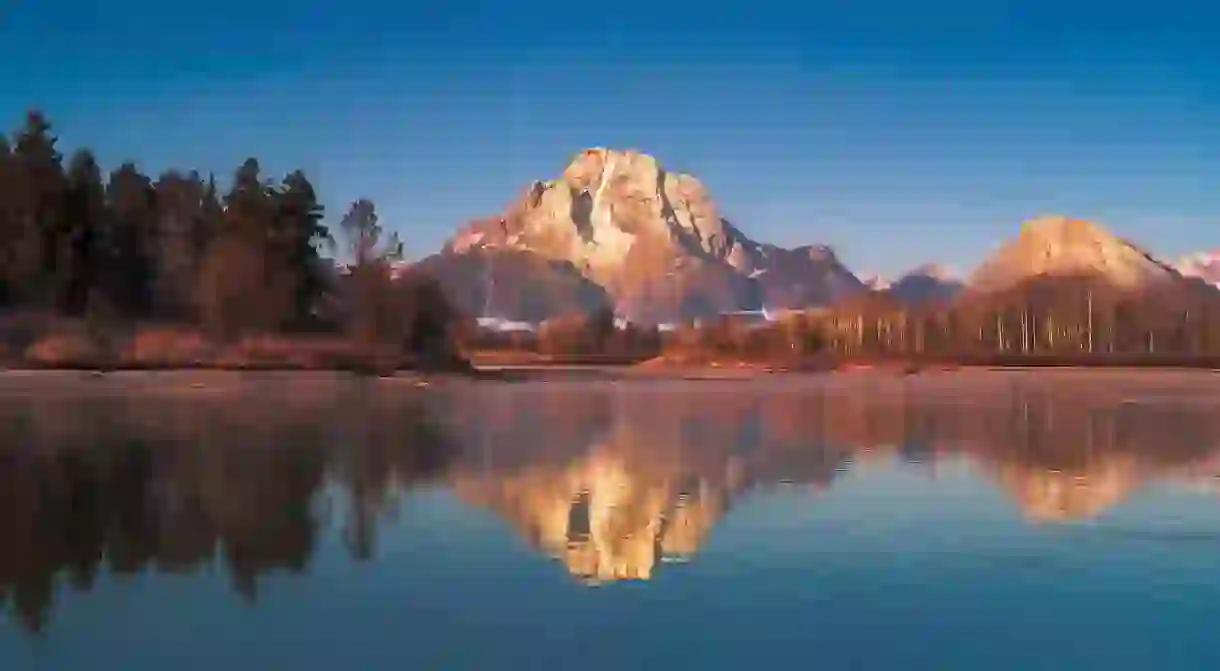A Practical Guide to Yellowstone National Park

Yellowstone National Park is home to some of nature’s most fascinating wonders, with a varying landscape of steep canyons, vast forests and rugged mountains that stretch across 3,500 square miles (9,100 square kilometres) of America’s Northwest. Culture Trip has your guide to how best to experience its beauty.

Boasting the largest collection of geothermal features across the globe – among them the kaleidoscopic Grand Prismatic Spring – Yellowstone National Park was crowned the first UNESCO World Heritage Site in the USA in 1978. Just over 100 years before this, the landscape was recognized as the world’s first national park. Today, it stands as one of the world’s biggest natural laboratories and a national treasure.
Background
Yellowstone National Park is known for its natural wonders. For the past 2 million years, the park’s active super-volcano, Yellowstone Caldera, has continued to spew lava, earning the destination its reputation as a volcanic hotspot. Fortunately, it hasn’t erupted for the better part of 640,000 years. Its fabled geyser Old Faithful, however, can blow multiple times a day.

With its alpine rivers, lakes, canyons, waterfalls, mountains and meadows, the park is so gargantuan that it spills over from Wyoming and into the neighboring states of Montana and Idaho. A place of lush vegetation, it’s home to hundreds of plant and animal species – many of which are endangered or threatened. Yellowstone National Park forms the center of the Greater Yellowstone Ecosystem, which makes it a vital focus for scientific study.
What to see and do
The Old Faithful geyser is a must-visit on a trip to Yellowstone National Park. It’s difficult to predict exactly when it will blow, but for you best chance of seeing one of its approximately 23 daily eruptions, allow 30 to 120 minutes for your visit.
Alongside the main attraction, the terraces of Mammoth Hot Springs are lauded as natural works of art. Created over thousands of years as hot water bubbles up from the ground, sculptural formations of deposited calcium carbonate dominate the landscape. While there, you can start a self-guided tour at former US army fort Fort Yellowstone, where most of the buildings were constructed at the turn of the 20th century.

There are numerous other highlights worth checking out within a 30-minute drive of the Tower-Roosevelt area. Take in the views of the Grand Canyon and Yellowstone River, scope out the wildlife across Lamar Valley, hike along the Bannock Trail, discover the petrified trees in Black Canyon, have a drink at the historic Roosevelt Lodge or hike to the magnificent Tower Falls waterfall.
The Norris Area, on the other hand, is a great place to spot iconic sights like the largest active geyser in the world, Steamboat Geyser; the Roaring Mountains with their thermal pools, and the Virginia Cascades waterfall. Nearby, fly-fishing enthusiasts can cast a line in the Gibbon River to try their luck at catching rainbow and brown trout.
Where to stay
Be it pitching up in a tent and sitting around a campfire or calling a local lodge home for the night, Yellowstone has numerous options for overnight stays. There are 12 campgrounds with RV parking, and some 300 more remote, wild campsites. There are also nine lodges throughout the park including the Canyon Lodge and Cabins, Grant Village and the Lake Lodge Cabins, which have two lodges open during the winter. If you plan on visiting during the peak season of July and August, be sure to reserve a spot early; but if you miss out you can check the nearby towns for more accommodation options.

Where to eat
As this is a park, having a picnic should be one of the first things you do, and there are a whopping 53 picnic areas where you can do just that. If you forget to make your sarnies ahead of time, however, there are plenty of stores designed to lend a helping hand, like the Canyon General Store, the Fishing Bridge General Store and the Lake Hotel General Store. For a dining experience that errs on the refined side, try the Canyon Lodge Dining Room, the Grant Village Restaurant or the Old Faithful Inn Dining Room, to name but a few.

This article is an updated version of a story created by Alexia Wulff.













